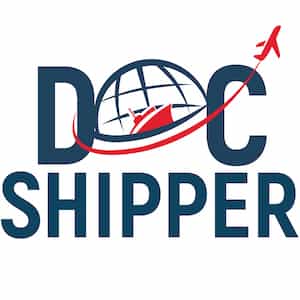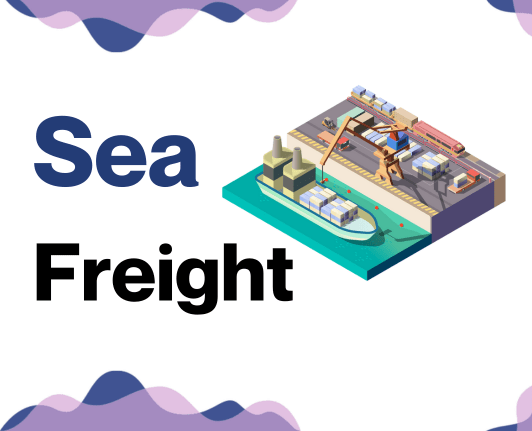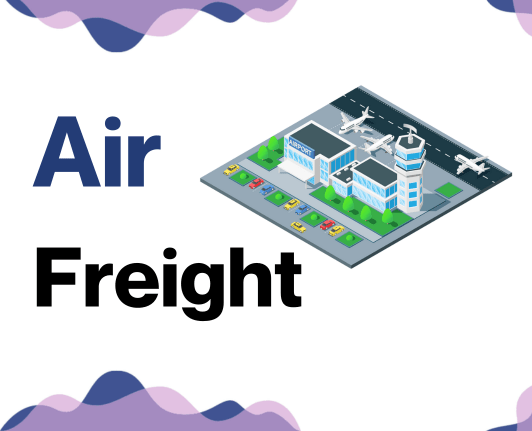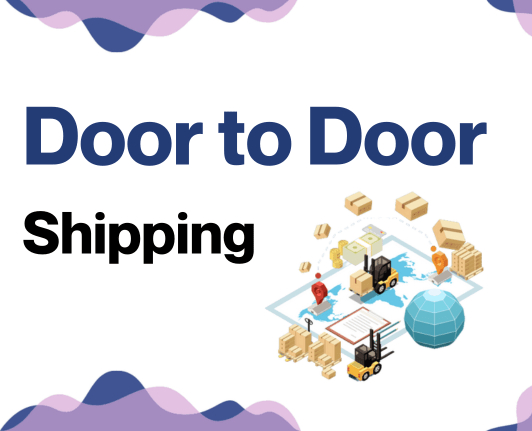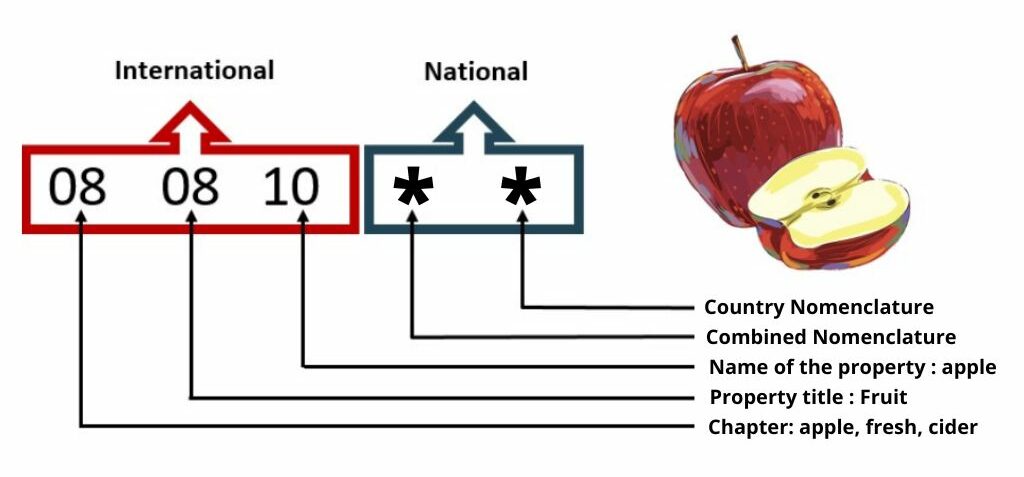Why did the parcel go to therapy? Because it had lots of 'baggage'! And we understand, managing shipping between Malaysia and Austria can seem just as complicated, from understanding rates to decoding transit times and navigating through complex customs regulations. Welcome to your guide! In this comprehensive resource, we'll dissect and discuss various freight options, provide a clear overview of the customs clearance, duties, and taxes, and serve up actionable advice that's perfectly tailored for businesses. Our goal? To equip you with the knowledge and confidence to streamline your international logistics operations. If the process still feels overwhelming, let DocShipper handle it for you! With their comprehensive services, they manage every step of the shipping journey, turning potential freight hurdles into your business success.
Table of Contents
Which are the different modes of transportation between Malaysia and Austria?
Preparing to ship goods between palm-coated Malaysia and Alpine Austria might feel like trying to ski down a sunny tropical beach. It's difficult to imagine, right? Well, that's where we come in. Ocean freight and air freight rise as the most effective routes due to the countries' geographical distance and significant land boundaries. Like deciding between skis or a surfboard, understanding your cargo type, speed requirement, and cost considerations will guide your choice. It's not just about geolocation but outlining your shipping priorities for a smooth voyage. Hang tight, we're delving into your best options, tailoring them to your specific transport needs.
How can DocShipper help?
Journeying through the logistics maze of shipping goods from Malaysia to Austria? Let DocShipper be your guide. We're experts in transport organization, customs clearance, and all those cumbersome administrative tasks. Don't stray in the labyrinth. Reach out for a free estimate within 24 hours or have a chat with our consultants - it's absolutely free!
DocShipper Tip: Sea freight might be the best solution for you if:
- You're dealing with hefty quantities or oversized goods. Sea transport is your go-to for maximizing space without stretching your budget.
- Time sensitivity isn't a concern for your shipment. Ocean freight is known for its leisurely pace, especially when compared to the speed of air or rail.
- Your supply chain connects key international harbors. This positions you to take full advantage of a wide-reaching network of ocean trade routes.
Sea freight between Malaysia and Austria
Shipping goods between Malaysia and Austria can be like a challenging game of chess: make the right moves, and you'll seamlessly connect your cargo from Kuala Lumpur's bustling Port Klang to the industrious Hafen Wien in Vienna. Ocean shipping is often your queen in play. It's cost-effective, perfect for high-volume goods, and much like how the queen moves, it may be slower than other methods, but sometimes, slow and steady wins the race.
However, sinking your ship is easier than you think. Many shippers and businesses grapple with frequent errors and unforeseen challenges, like a rogue bishop blocking your path. The complexity of the customs clearance, waiting puzzle of duties and regulations can be daunting and confusing. But worry not! Just as a chess match has strategic moves, so does ocean shipping. In this section, we've gathered best practices, tips, and specifications to help you outmaneuver these obstacles and ship your goods without a hitch. Let's make shipping as easy as saying 'checkmate.
Main shipping ports in Malaysia
Port Klang
Location and Volume: Situated in the district of Klang, Selangor, Port Klang now ranks as Malaysia's busiest port and serves as a core gateway to the trade-rich areas of South East Asia. It handles over 12 million TEU.
Key Trading Partners and Strategic Importance: Port Klang has key trade linkages with China, Singapore, Indonesia, and USA. It's the linchpin for Malaysia's export industries, contributing significantly to economy.
Context for Businesses: If you're planning on reaching markets in East Asia and the ASEAN region, Port Klang can serve as an advantageous logistics point, thanks to its extensive connections and thriving commercial activity.
Port of Tanjung Pelepas
Location and Volume: Located at the western end of Johor, the Port of Tanjung Pelepas is the second largest port of Malaysia, handling nearly 9 million TEU.
Key Trading Partners and Strategic Importance: The port has established trade relations with Singapore, China, Indonesia, and United States. It's celebrated as one of fast-growing container ports with modern infrastructure.
Context for Businesses: If you're focusing on swift transits and effective shipping connections, Tanjung Pelepas might be perfect due to its advanced facilities and growing prominence on major shipping lines.
Penang Port
Location and Volume: Penang Port, situated in the state of Penang, is Malaysia's oldest and longest serving port, moving approximately 1.5 million TEU.
Key Trading Partners and Strategic Importance: Penang Port's largest trade partners are China, Singapore, and Thailand. It's strategically significant as a major shipping route between the Indian Ocean and the Pacific Ocean.
Context for Businesses: If your trade leans more towards northbound routes or targets markets in Thailand and North Asia, Penang Port can play a vital role in your logistics plan, due to its geographical advantage.
Bintulu Port
Location and Volume: Bintulu Port, located in Bintulu, Sarawak, is specialized for bulk and liquid cargo, processing over 59 million tonnes yearly.
Key Trading Partners and Strategic Importance: The port goes along with Japan, South Korea, and China for most of its trade and has become a critical logistics hub for East Malaysia's resource-rich regions.
Context for Businesses: If your enterprise is in the oil, gas or palm oil sectors, Bintulu could be a compelling strategic choice due to its specialized infrastructure and access to resource-rich regions.
Kuantan Port
Location and Volume: Kuantan Port in Pahang, East Coast Peninsular, is a multipurpose port dealing with liquid, dry bulk and general cargo, handling over 26 million freight weight tonnes.
Key Trading Partners and Strategic Importance: Kuantan Port's major trade partners are China, Singapore, Australia, and Indonesia. The port has been developing into a deep-sea port, transforming it into a key player in the maritime sector.
Context for Businesses: If you're working with a variety of export goods, Kuantan's multipurpose facilities and its emerging status as a deep-sea port can effectively support your varied shipping requirements.
Johor Port
Location and Volume: Johor Port, located at the southern tip of Peninsular Malaysia, is a multipurpose port that handles around 40 million freight weight tonnes per year.
Key Trading Partners and Strategic Importance: It has active trade with Indonesia, Singapore, China, and India and stands out for its comprehensive range of terminal, logistics, and marine services.
Context for Businesses: If you seek versatile port handling and warehousing services or target the Indonesian or Southern Asian markets, Johor Port could serve as an optimal hub, given its wide range of services and strategic location.
Main shipping ports in Austria
Port of Vienna
Location and Volume: Situated at the intersection of North-South and East-West transport corridors, the Port of Vienna is the largest public port in Austria and one of the key transport and logistics centers in Central Europe. It posts an annual shipping volume of roughly 12 million tons.
Key Trading Partners and Strategic Importance: The main trading partners for this port include Germany, Hungary, Slovakia, and China. Significant due to its perfect logistics connections within Europe and beyond, this port has also been immensely successful as a multimodal logistics hub.
Context for Businesses: If your business is planning to expand to Eastern and Central Europe, Port of Vienna comes across as an inevitable choice. Given its versatile carrier connections and its standing as a focal juncture of various transport networks, it's a pivotal location for establishing efficient supply chains.
Port of Linz
Location and Volume: Nestled on the right bank of the Danube, Port of Linz handles around 6 million tons of shipping volume per annum. It's the second largest port in Austria and plays a pivotal role in cross-bordering trade activities.
Key Trading Partners and Strategic Importance: Key trading partners include neighboring European countries, especially Germany, Hungary, and the Netherlands. This port occupies a strategically important location serving as the hub of the regional river freight industry, considerably contributing to both, Austrian and international logistical sectors.
Context for Businesses: If your venture is heavily reliant on river freight, Port of Linz can turn out to be a beneficial gateway to the heart of Europe. Offering multimodal handling facilities and the benefit of a centralized location, it can serve as an efficient node for your inland water transportation needs.
Port of Krems
Location and Volume: Located on the southern bank of the Danube, the Port of Krems records an annual shipping volume of approximately 1.8 million tons. It is well-known for its container and bulk cargo handling capabilities.
Key Trading Partners and Strategic Importance: The Port of Krems plays a crucial role in fulfilling the commerce requirements of Central and Eastern European nations. It's strategically placed in the Eastern region of Austria, making it a superior logistic point for businesses targeting the Eastern European markets.
Context for Businesses: If you're aiming to penetrate Eastern European markets or if your business demands expert handling of bulk cargo, the Port of Krems is an optimal choice. It offers specialized infrastructure for several types of cargos and presents a convenient entry point to Eastern economies.
Port of Enns
Location and Volume: The Port of Enns is situated on the Enns River, handling an average of about 1.7 million tons of cargo volume per year. This port facilitates crucial transshipment activities across the region.
Key Trading Partners and Strategic Importance: The port's key trading partners consist of Germany, Hungary, Netherlands, and China dominating the import-export activities. A strategic importance lies within its role as a significant hub for multi-modal transshipments and direct cargos.
Context for Businesses: For businesses depending on seamless multi-modal transport connections or requiring specialized logistics services for project cargoes, the Port of Enns can be a vital addition. This port provides extensive facilities, efficient transport links, and custom-tailored logistics solutions, enabling businesses to fortify their operations.
Port of Salzburg
Location and Volume: Located inland, the Port of Salzburg is a significant transport hub handling around 1.75 million tons of freight per year. It is Austria's only combined cargo terminal that offers intermodal freight transportation.
Key Trading Partners and Strategic Importance: The port’s primary trading partners include Germany, Italy, and Eastern European nations. As the only combined cargo terminal in Austria, it's strategic for businesses that handle both river and rail freight.
Context for Businesses: If your business seeks to optimize your logistics efficiently, you might find the integration of rail and river transport at the Port of Salzburg to be particularly beneficial. The terminal's convenient intermodal options can streamline your operations by offering options beyond typical freight carriers.
Should I choose FCL or LCL when shipping between Malaysia and Austria?
When shipping goods between Malaysia and Austria, the choice between Full Container Load (FCL) and Less than Container Load (LCL), or consolidation, is critical. This decision will directly affect your cost, delivery timeframe, and overall shipping success. This section will unravel the intricacies of both LCL and FCL, helping you determine which sea freight option best aligns with your specific needs. It's all about making an informed decision that not only saves you money and time but also ensures your shipment reaches its destination smoothly.
LCL: Less than Container Load
Definition: LCL shipment, short for Less-than-Container Load, is a shipping method where consolidated cargo from multiple customers is combined into a single container.
When to Use: If you're dealing with lower volume cargo, typically less than 13/14/15 cubic meters, LCL freight provides an economical and flexible option. This allows you to only pay for the space you need.
Example: Let's say you're a business owner in Malaysia who sells artisan wooden furniture, but your order volume to Austria is too small to fill an entire container. Investing in a full container would mean higher costs and wasting space. In this scenario, LCL shipping becomes the preferred choice, where your furniture shares space with other businesses' cargo.
Cost Implications: Due to shipment consolidation, LCL often results in more affordable shipping rates compared to full-container load when you have less cargo. However, LCL freight might have additional costs associated with consolidation and deconsolidation. These extra steps in the shipping process could result in higher overall costs if not managed effectively, but for lower volume shipments, it still tends to be a more cost-efficient solution.
FCL: Full Container Load
Definition: FCL, or Full Container Load, is a type of sea freight where an entire container is used to transport goods. Whether it's a 20'ft or 40'ft container, the entire space is exclusively reserved for you.
When to Use: FCL shipping is ideal when you have a shipment volume of more than 13/14/15 CBM. Since the whole container is utilized for your cargo, it's economical for large volume shipping. Plus, since the fcl container gets sealed from the origin, it offers added security by limiting the risk of loss or damage during transit.
Example: Say you're a toy manufacturer in Malaysia, shipping 16 CBM of merchandise to a retailer in Austria. Picking FCL over LCL makes more sense because your volume exceeds the 15 CBM mark, translating into a cheaper FCL shipping quote while also ensuring your toys remain intact throughout the journey.
Cost Implications: While the exact cost can vary, FCL is generally cost-effective for larger shipments. Consider that you're paying for the entire container even if it's not completely filled. So the more you're shipping, the more you'll benefit from the lower per-cubic-meter cost associated with FCL shipping.
Unlock hassle-free shipping
Looking to ship cargo from Malaysia to Austria? At DocShipper, we're committed to simplifying your freight journey. Our ocean freight experts walk you through whether consolidation or a full container suits your volume, type of goods, and time constraints. Enjoy personalized solutions, leaving guesswork out of the equation. Ready to make international shipping easier? Let's discuss - reach out for your free estimation today.
How long does sea freight take between Malaysia and Austria?
Sea freight from Malaysia to Austria generally takes around 30 to 40 days on average. However, it's important to note that these transit times can be influenced by factors like the specific ports being used, the weight of the cargo, and the type of goods being shipped. For a more precise and personalized quote, it would be recommended to contact a freight forwarder like DocShipper.
Here are the average sea freight times for the main ports in Malaysia and Austria:
| Malaysian Ports | Austrian Ports | Average Transit Time (Days) |
| Port Klang | Vienna | 24 |
| Penang Port | Linz | 43 |
| Johor Port | Krems | 41 |
| Kuantan Port | Enns | 39 |
* Please note that Austria is a landlocked country and the ports mentioned are River Ports connected through the Danube River for sea freight transport.
How much does it cost to ship a container between Malaysia and Austria?
Ocean freight rates between Malaysia and Austria can widely vary, typically cost anywhere from $50 to $300 per CBM. Nevertheless, an exact shipping cost is elusive as it hinges on multiple factors - both the Points of Loading and Destination, your chosen carrier, the nature of your goods, and the unpredictable swings in the monthly market. But don't worry, our detail-oriented shipping specialists are here for you! They will skillfully navigate these variables and meticulously work towards providing bespoke rates that align with your shipment's unique needs. Remember, we quote on a case-by-case basis, all to ensure you get the best deal. Let's get you shipping with confidence!
Special transportation services
Out of Gauge (OOG) Container
Definition: OOG containers are special shipping containers designed to carry oversized cargo that exceeds the dimensions of standard containers.
Suitable for: OOG container is best for shipping large machinery, construction equipment, large car parts, or any other out of gauge cargo that doesn't fit standard container dimensions.
Examples: If your Malaysian business specializes in producing yachts or aircraft components, you might need to ship these large items to Austria using OOG containers.
Why it might be the best choice for you: If your cargo's dimensions are too large for standard containers, don't fret - OOG containers fulfill this specific niche in sea freight, ensuring your goods arrive safely in Austria.
Break Bulk
Definition: Break bulk shipping involves the transportation of goods that are loaded individually and not in containers. They're typically loaded onto a vessel one piece at a time.
Suitable for: This method is often used for large items, whole machinery, or loose cargo load that do not fit in standard containers.
Examples: Companies producing oversized machinery, windmill parts, or timber are frequent users of break bulk shipping from Malaysia to Austria.
Why it might be the best choice for you: If your products don't fit into shipping containers or need to be shipped separately, break bulk could be the most efficient solution for you.
Dry Bulk
Definition: Dry bulk shipping involves transporting unpackaged goods in large quantities, such as minerals or grains, in the cargo hold of a ship.
Suitable for: Dry bulk is perfect for transporting bulk commodities like coal, grains, or fertilizers which are measured in volume.
Examples: If you're exporting agricultural products like rice or palm oil from Malaysia to Austria, dry bulk would be your solution.
Why it might be the best choice for you: For businesses shipping large quantities of loose, dry cargo, dry bulk can provide a more cost-effective and efficient shipping solution.
Roll-on/Roll-off (Ro-Ro)
Definition: Ro-Ro vessels are designed to carry wheeled cargo, such as cars, trucks, or trailers, which are driven on and off the ship on their own wheels.
Suitable for: Ro-Ro is ideal for transportations implying vehicles, machinery, or any cargo that can be wheeled.
Examples: If you manufacture automobiles or heavy trucks in Malaysia that need to be shipped to Austria, the ro-ro vessel is the way.
Why it might be the best choice for you: If your products can be driven or towed onto the vessel, Ro-Ro is a secure and efficient solution that minimizes the need for cranes or lifting equipment.
Reefer Containers
Definition: Reefer containers, or refrigerated containers, are temperature-controlled containers used to ship perishable goods.
Suitable for: They're perfect for transporting fruits, vegetables, meat, or any product that requires a regulated temperature.
Examples: If you're in the food industry, like exporting durian or seafood specialties from Malaysia to Austria, reefer containers are essential.
Why it might be the best choice for you: Around the globe, with temperature control and insulation, reefer containers give the assurance that your perishable goods will reach Austria in optimal condition.
Choosing the right type of shipping for your goods is crucial for your business. At DocShipper, we're committed to helping you make the best choice. Contact us for a free shipping quote in less than 24 hours.
DocShipper Tip: Air freight might be the best solution for you if:
- You're pressed for time or facing a non-negotiable deadline. Air freight delivers unparalleled speed when it comes to transit times.
- Your shipment is modest in size, falling under 2 CBM. Air freight is particularly well-suited for these smaller consignments.
- Your supply chain includes destinations that are off the beaten maritime or rail paths. Air freight gives you access to a comprehensive global airport network.
Air freight between Malaysia and Austria
Speed, reliability, and cost-efficiency make air freight an appealing choice for shipping your goods from Malaysia to Austria, especially for light, high-value items. Imagine getting your collection of exclusive wrist-watches or precious gemstones delivered rapidly and securely, without breaking the bank.
However, the world of air freight isn't without its pitfalls. While calculating costs, many slip up by not using the correct weight formula, like confusing actual weight with volumetric weight—a rookie mistake akin to comparing apples to oranges! Others overlook best practices, leading to an inflated price tag. This guide will help you sidestep these obstacles, ensuring a breezy, cost-effective air freight experience.
Air Cargo vs Express Air Freight: How should I ship?
When it comes to shipping between Malaysia and Austria, choosing between air cargo and express air freight could feel like deciding between a relaxing shared ride or a speedy solo trip. Air cargo, the shared-ride of the skies, uses passenger airlines to piggyback your goods, keeping costs low. On the other hand, Express freight, the VIP solo journey, zips your goods in a dedicated airplane, ensuring unparalleled speed. Let’s break down these two options to find what suits your business the best.
Should I choose Air Cargo between Malaysia and Austria?
Air cargo offers a reliable and cost-effective solution when shipping goods between Malaysia and Austria.
For example, Malaysia Airlines and Austrian Airlines operate regular cargo flights, ensuring your shipment arrives promptly and in excellent condition. Keep in mind, however, that longer transit times can occur due to fixed schedules. Interestingly, with 100/150 kg (220/330 lbs) of cargo, the appeal of airline cargo heightens, further complementing your budgetary needs.. Your business really stands to benefit from this mode of transportation.
Should I choose Express Air Freight between Malaysia and Austria?
Express air freight, a highly efficient service utilizing exclusive cargo planes with zero passengers, is particularly ideal for shipments falling under 1 CBM or weighing 100/150 kg (220/330 lbs). In scenarios necessitating quick transit times or dealing with emergency supplies, this premium service shines. Acclaimed international courier firms such as FedEx, UPS, and DHL often provide these services. If your business requires fast, reliable, and secure delivery from Malaysia to Austria, consider leveraging express air freight to meet your shipping targets without any hitch.
Main international airports in Malaysia
Kuala Lumpur International Airport
Cargo Volume: Annually, KLIA handles more than 1.2 million metric tons of cargo.
Key Trading Partners: Major trading partners include China, USA, Indonesia, Singapore, and Japan.
Strategic Importance: Being one of the busiest airports in Southeast Asia, KLIA is widely recognized for its well-connected network, servicing over 100 airlines and connecting to more than 50 countries globally.
Notable Features: Housing a state-of-the-art Advanced Cargo Centre, the airport has notable features like pallet screening machines, built-in house and unit load device (ULD) stations with an automated storage and retrieval system. Plus, it has a dedicated perishable cargo complex.
For Your Business: If you're shipping perishable goods or need reliable, extensive global connectivity, KLIA could be a strategic choice for your business's shipping needs.
Penang International Airport
Cargo Volume: Penang International manages over 150 thousand metric tons of cargo yearly.
Key Trading Partners: The primary trade partners comprise China, Japan, USA, Singapore, and Australia.
Strategic Importance: As the third busiest airport in Malaysia, it is strategically located near the Bayan Lepas Free Industrial Zone, making it an attractive shipping point for electronics and high-tech industries.
Notable Features: It possesses a cargo complex with cold storage facilities alongside express courier handling and transshipment facilities.
For Your Business: If your business handles electronic, high-tech, or perishable goods and needs excellent accessibility to industrial zones, consider Penang International for your shipping needs.
Senai International Airport
Cargo Volume: The airport manages over 10 thousand metric tons of cargo every year.
Key Trading Partners: Notable trade partners include Singapore, Thailand, Indonesia, and China.
Strategic Importance: Senai International serves as an industrial gateway and logistics hub to southern Peninsular Malaysia, offering air, sea, and land connectivity.
Notable Features: It features a Cargo Centre equipped with a range of equipment for the safe management of cargo and access to Free Trade Zones.
For Your Business: If your businesses seek integrated logistics and easy access to Free Trade Zones, Senai International would align well with your cargo requirements.
Kota Kinabalu International Airport
Cargo Volume: This airport handles around 15 thousand metric tons of cargo annually.
Key Trading Partners: Main trading partners include China, Taiwan, Singapore, South Korea, and Japan.
Strategic Importance: Kota Kinabalu serves as a crucial connection between East and West Malaysia and services a large number of airlines, enhancing its appeal as a shipping point.
Notable Features: The airport includes modern cargo facilities and retail spaces spread across its two terminals.
For Your Business: If you're looking for a robust connection within Malaysia and direct links to Asian markets, Kota Kinabalu might play a substantial role in your shipping strategy.
Kuching International Airport
Cargo Volume: Kuching International handles over 22 thousand metric tons of cargo each year.
Key Trading Partners: The main trading partners include Singapore, China, Australia, and Japan.
Strategic Importance: As the gateway to Sarawak, it is a crucial logistics point for East Malaysia.
Notable Features: The airport offers a modern cargo terminal with many airline offices onsite.
For Your Business: If you're doing business in East Malaysia and within Borneo, Kuching International would be a viable solution for your logistics and shipping needs.
Main international airports in Austria
Vienna International Airport
Cargo Volume: In 2019, Vienna International Airport handled about 295,427 tons of cargo.
Key Trading Partners: Vienna has key trading relationships with the Middle East and Asia, namely countries like China, Qatar, and the UAE.
Strategic Importance: Vienna International Airport is the largest airport in Austria, making it a key hub for shipments to and from Central Europe. It is also significant for its well-established facilities for perishable cargo.
Notable Features: It has a dedicated Cargo Center and offers modern facilities for freight forwarders, air cargo carriers, and logistical service providers. The 24/7 operations accommodate various types of cargo, including dangerous goods and high-value items.
For Your Business: The airport's strategic position in Central Europe and excellent connections mean your cargo can be efficiently transported to numerous global destinations. Both its infrastructure and extensive cargo services, such as specialized facilities for cold chain and pharma goods, make it a reliable choice.
Innsbruck Airport
Cargo Volume: Innsbruck Airport handles a significant volume of cargo, although specific statistics are not readily available.
Key Trading Partners: As a gateway to the Tyrol region, this airport engages in cargo trade with major European nations.
Strategic Importance: Innsbruck Airport is vital for the shipment of goods to the Tyrol region, minimizing road and rail travel time for urgent consignments.
Notable Features: It's one of the few airports that can handle the quick loading and unloading of large cargo volumes due to its infrastructure. Innsbruck has also established itself as a specialist in handling live animal transportation.
For Your Business: With its capable cargo services and shorter ground transfer times to the Tyrol region, Innsbruck Airport could be an efficient option for certain shipments, particularly if you're in the live animal trade.
Graz Airport
Cargo Volume: Graz Airport processed around 13,300 tons of cargo in 2019.
Key Trading Partners: The airport trades predominantly with nations within the European Union.
Strategic Importance: Located in Styria, Graz Airport is a crucial transportation hub for this region of Austria. It's well-connected to highway and rail networks, an important factor for multimodal shipping.
Notable Features: Graz Airport specializes in the transport of temperature-sensitive goods, such as pharmaceuticals and perishable foods. Air cargo facilities are available day and night.
For Your Business: The airport's dedicated infrastructure for temperature-sensitive goods might be a beneficial choice if your business deals with such items. Its close proximity to major transport routes provides easy access to the European market, adding to its appeal.
How long does air freight take between Malaysia and Austria?
The average air freight shipping time between Malaysia and Austria is approximately 3-10 days. However, bear in mind that transit durations do differ considerably depending on the origin and destination airports, the weight of the goods, and the nature of the items being transported. For the most accurate, tailored information regarding shipping times between these countries, it is recommended to consult with an experienced freight forwarder such as DocShipper.
How much does it cost to ship a parcel between Malaysia and Austria with air freight?
While air freight costs between Malaysia and Austria usually range from $3 to $8 per kilogram, numerous factors can influence the exact price. It depends on the distance from the departure and arrival airports, dimensions and weight of the package, as well as the nature of goods being transported. This variability makes it impossible to offer a 'one-size-fits-all' price. However, rest assured that our team deeply analyzes each specific case to provide you with the most accurate and fairest quotations. So why wait? Contact us and receive a custom, free quote in less than 24 hours!
What is the difference between volumetric and gross weight?
Gross weight, in shipment terms, refers to the total weight of a shipment, including the goods and the packaging. On the other hand, volumetric weight involves an estimate of the cargo's weight based on its dimensions, taking into account that larger items often take up more space on an aircraft.
For air cargo, the volumetric weight is calculated by multiplying the package's length, width and height in centimeters and dividing the result by 6,000.
Say, for example, you're shipping a crate with measurements 100cm x 60cm x 60cm, your cargo’s volumetric weight would be 60 kilograms (or 132.28 lbs).
Gross weight is simply the physical weight of the item and the packaging. Let's imagine the same crate actually weighs 55 kilograms (or 121.25 lbs) when placed on a scale.
When organizing air freight, the shipping cost will depend on both measurements. Providers choose the higher of the two weights - in this case, the volumetric weight (60 kg) - to calculate freight charges.
Comprehending the difference between these weights can help optimize your shipment's size and cost. Ensuring the volume is well used could save you money in the long run by avoiding paying for the space your air cargo occupies rather than its actual weight.


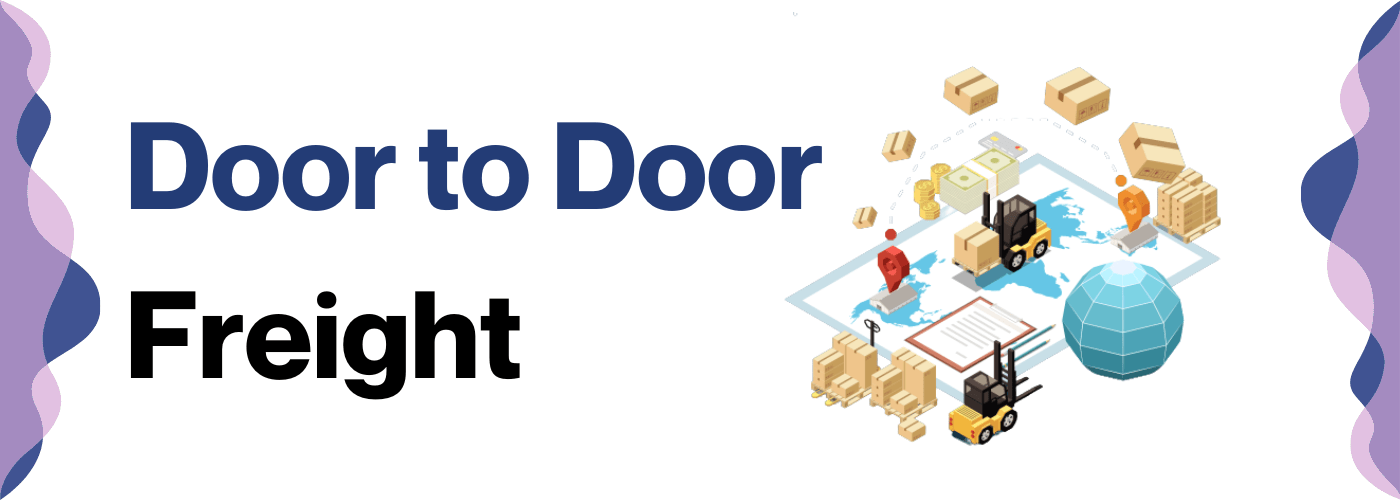
DocShipper tip: Door to Door might be the best solution for you if:
- You value convenience and want a seamless shipping process, as door-to-door takes care of every step from pickup to delivery.
- You prefer a single point of contact, as door-to-door services typically provide a dedicated agent to handle all aspects of the shipment.
- You want to minimize the handling of your goods, reducing the risk of damage or loss, as door-to-door minimizes transitions between different modes of transport.
Door to door between Malaysia and Austria
Navigating international freight can be daunting, but Door to Door shipping services streamlines the process. Offering swift, hassle-free delivery from Malaysia to Austria, it includes everything from pickup, transportation, customs clearance to delivery at your final destination. With apparent advantages like lessened responsibilities and increased efficiency, it's a favorable choice among businesses. Excited? So are we! So, without further ado, let's dive in!
Overview – Door to Door
Shipping from Malaysia to Austria? Going door to door is your stress-free solution. You'll sidestep complex customs and avoid hefty duties, with our team handling every detail from start to end. Although it may cost more, its ease and efficiency make it a top choice among DocShipper's clients. It's a stride in logistics with its notable advantage of freeing you from the burdens of detailed shipping procedures. The main downside? Timelines can be unpredictable. But if drop-off to pick-up simplicity is your prime concern, door-to-door shipping is the bespoke logistics solution for you. Let us simplify your shipping journey.
Why should I use a Door to Door service between Malaysia and Austria?
Ever thought of starring in a shipping-relief rom-com called 'Logistics Made Easy'? The protagonist, Door to Door shipping, would brighten any shipping manager's day from Kuala Lumpur to Vienna. Let's explore 5 reasons!
1. Stress-busting Simplicity: With Door to Door services, you'll wave goodbye to the nightmare of coordinating multiple legs of transportation. Once your goods are collected from origin, the next stop is their final destination. No more logistical juggling!
2. Timeliness: Urgent shipments? Door to Door is your trusty sidekick, ensuring your goods get from A to B, pronto! Pack, hand over, and relax - your order is on the clock, not you.
3. Specialized Care: Got complex cargo? Door to Door services treat your goods like VIPs of the freight world. Under these expert eyes and hands, your goods will glide through the shipping journey like stars on a red carpet.
4. End-to-end Trucking: This service handles everything from doorstep pick-up to final delivery. Imagine the convenience of not having to worry about local trucking arrangements. Now that's what we call room service!
5. Proactive Updates: Say goodbye to guesswork! With Door to Door, transparency is no longer a luxury–it's standard. Real-time tracking and regular updates mean you always have your finger on the pulse.
In summary, Door to Door service takes the ‘work’ out of the network, offering you comprehensive peace of mind from Malaysia to Austria. Now that's a feel-good blockbuster!
DocShipper – Door to Door specialist between Malaysia and Austria
Welcome to stress-free shipping from Malaysia to Austria with DocShipper. We are your all-inclusive logistics solution, managing everything from packing to customs clearance. Utilize shipping methods tailored to your specific needs, all under the guidance of your personal Account Executive. No need to worry, we've got you sorted. Get in touch for a complimentary estimate within 24 hours or week free advice from our experienced consultants.
Customs clearance in Austria for goods imported from Malaysia
Customs clearance is the critical stage where your goods cross the threshold from Malaysia into Austria. Navigating this process can feel like a giant maze, with potential pitfalls like surprise fees and the risk of your shipment getting stuck in no man's land. It pays to know the ropes, from duties and taxes right through to quotas and licences. Hold tight as we guide you through the complexities in our following sections. Remember, DocShipper's role is to support you every step of the way on this global journey. For tailor-made assistance, send us the origin, value, and HS Code of your goods. Armed with these details, our team delivers reliably accurate estimates to help you budget your project effectively. Your successful shipment is our mission. So let's navigate this customs clearance process together!
How to calculate duties & taxes when importing from Malaysia to Austria?
Navigating through the sea of customs duties and taxes can certainly seem daunting, but with the right information, it's a lot more manageable than it appears - it's all about understanding the key components. Generally speaking, determining customs duties requires you to be familiar with your product's country of origin - where it was manufactured or produced, its Harmonized System (HS) Code - a universally recognized product classification system, the Customs Value- the product's total value as per the criteria established by the World Trade Organization (WTO), the Applicable Tariff Rate - a percentage of the Customs Value which is set by the importing country, and lastly, other taxes and fees that may be applicable to your product specifically.
Now, when importing from Malaysia to Austria, the first essential step you'll need to take is identifying with certainty the country where the goods were manufactured or produced. This distinction is crucial as it determines not only the legitimacy of the goods but the accurate application of duties as well.
Step 1 - Identify the Country of Origin
Discovering the country of origin is more than a simple checkbox in your shipping process - here's why:
1. It shapes tariff rates: Many countries have differentiated tariff rates based on the goods' country of origin.
2. It helps comply with quotas: Certain nations impose quotas on imports depending on their origin.
3. It's crucial for customs operations: Customs regulations require the identification of your goods' country of origin.
4. Trade agreements hinge on it: Trade agreements like the one between Malaysia and the EU dictate the tariff rates and customs duties.
5. It guides import restrictions: Import restrictions often apply to goods from specific places.
So, don't skimp on this step. It could influence how much you pay in duties and whether your goods pass through customs swiftly or not.
Austrian businesses, take note! The EU, which includes Austria, has an agreement with Malaysia that can significantly decimate customs duties. Consult this agreement to see if your goods qualify for lower rates or even exemptions. And don't forget, certain goods like some agricultural and fishery products have import restrictions. Always verify before you ship!
Step 2 - Find the HS Code of your product
The Harmonized System (HS) Code refers to an international nomenclature for the classification of products. It allows participating countries to classify traded goods on a common basis for customs purposes. At the international level, the Harmonized System (HS) for classifying goods is a six-digit code system.
Your supplier is often the easiest option for finding the HS code for your product. They're the most familiar with what they're importing, along with the associated regulations. However, if asking the supplier isn't an option, don't worry - we have an easy step-by-step process for you.
First, navigate to the Harmonized Tariff Schedule on the U.S. International Trade Commission’s website. Next, find the search bar and enter the name of your product. Finally, check the Heading/Subheading column for your HS code.
Remember, it's notably important to be accurate with the HS code. Incorrect classification can lead to delays and potential fines. It's not just about finding a code - it's about finding the right one for your specific product.
Here's an infographic showing you how to read an HS code.
Step 3 - Calculate the Customs Value
Grasping the concept of 'Customs Value' can initially seem like a serious challenge, but once you grasp it, you'll be better equipped in your international shipping journey. Isn't it thought-provoking that the customs value doesn't merely reflect the value of your goods? In the world of customs, Austria calculates the customs value as the CIF value (Cost + Insurance + Freight). So, let's say you paid $10,000 for your goods from Malaysia, spent 2,000$ on shipping, and $300 on insurance. In Austria's eyes, your shipment's customs value isn't just $10,000 (product cost), but rather $12,300, accounting for all the steps that brought your goods to Austria. Knowing this upfront can save you from unforeseen costs during the customs clearance process.
Step 4 - Figure out the applicable Import Tariff
An import tariff is a tax imposed on goods imported from another country. For goods coming into Austria from Malaysia, import tariffs are determined by the European Union's TARIC system. This Common External Tariff system by the EU is shared among its member countries, including Austria.
To identify the tariff for your product, visit the TARIC Consultation Tool. Once there, enter the Harmonized System (HS) code linked with your product, and select Malaysia as the country of origin. The system will generate the duties and taxes specifically for your product.
As an example, suppose we are importing leather handbags identified by the HS code 420221 (leather handbags). Inputting this in the TARIC system, you might find a tariff rate of 3%.
To calculate your import duty, apply the tariff rate to the total Cost, Insurance, Freight (CIF) cost. For instance, with a CIF cost of $10,000 USD, you would pay $300 USD (3% of $10,000) in import duties.
Remember, import tariffs can significantly impact your product's final cost. Knowing these beforehand enables better financial planning and avoids surprises at customs.
Step 5 - Consider other Import Duties and Taxes
While the standard tariff rate is a primary component, other import duties can also apply based on your goods' country of origin and product nature. For instance, excise duty might be levied on certain types of goods like alcohol or tobacco from Malaysia. Anti-dumping duties are applied when goods are sold beneath their usual market price.
Notably, remember to account for Value Added Tax. The VAT rate in Austria is typically 20%, but for goods like books, the rate drops to 10%. So, if you're importing a book worth $100, you'll -$10 for VAT. But don't take these numbers as set in stone - always verify current rates to avoid surprises.
To calculate your VAT: (value of the imported goods + any duty owed) x VAT rate = Amount of VAT owed. For example, if the value of your goods is $200 and duty is $20, your VAT (at a rate of 20%) would be (($200 + $20) x .20) = $44.
Overall, consider your product's specifics and the associated taxes, as they can substantially influence your cost calculation for importing goods from Malaysia to Austria.
Step 6 - Calculate the Customs Duties
Understanding the calculation of customs duties is key to shipping goods from Malaysia to Austria. First, determine the customs value – usually, the price paid for goods plus shipping.
Example 1: If you're importing furniture worth $5,000, excluding VAT, the customs duty rate is 2.7%. Therefore, the customs duty is $135 ($5,000 2.7%).
However, if VAT (Value Added Tax) applies, it gets added after calculating customs duties.
Example 2: If your goods are electronic gadgets worth $3,000 with a duty rate of 3.5% and a VAT rate of 20%, the customs duty amounts to $105. Then, calculate VAT on the sum of customs value and duty ($3,105), resulting in a VAT of $621. Total payable duty and VAT are $726.
If anti-dumping taxes and Excise Duty apply, they're also added.
Example 3: For a wine importation worth $10,000, with a customs duty rate of 4%, VAT rate of 20%, an anti-dumping tax of $5 per bottle, and excise tax of $1 per bottle (1000 bottles), the customs duty amounts to $400. Added with anti-dumping tax ($5,000) and Excise Duty ($1,000), the subtotal is $16,400. Apply VAT on this subtotal to get $3,280. The total tax payable is $8,680.
At DocShipper, we manage these complex calculations, ensuring you avoid overpaying. You can rely on our worldwide customs clearance services. Contact us for a free quote within 24 hours. We're committed to making the process as straightforward as possible for you.
Does DocShipper charge customs fees?
A common question! Luckily, as a customs broker, DocShipper isn't who is charging customs duties in either Malaysia or Austria. Rather, they handle customs clearance fees; a different beast. Customs duties and taxes? Those go straight to the government. Think of it as part of the service, with all that tiresome paperwork taken care of and a finalized document from customs as proof. Remember, you only pay what the government demands, not a penny more.
Contact Details for Customs Authorities
Malaysia Customs
Official name: Royal Malaysian Customs Department
Official website: http://www.customs.gov.my/en/
Austria Customs
Official name: Austrian Federal Ministry of Finance
Official website: https://www.bmf.gv.at/
Required documents for customs clearance
Grasping the paperwork for customs clearance can be a handful. In this section, we'll demystify crucial documents like the Bill of Lading, Packing List, Certificate of Origin, and Documents of Conformity (CE standard), helping you ship goods hassle-free.
Bill of Lading
If you're shipping goods from Malaysia to Austria, the Bill of Lading (BOL) is your golden ticket. It's more than just a receipt – it signifies the transfer of ownership from the seller to the buyer. You'll need it at every checkpoint, so don't let it slip between the cracks of your paperwork.
Go modern with the electronic or telex release. It can simplify the process, avoiding frustrating postal or courier delays. It’ll have the container number, the shipping line, and all the vitals – like a passport for your goods.
For air cargo? Make sure you have an Air Waybill (AWB). It does the same job as the BOL but in the high-flying world of airfreight.
Here’s a tip – always double-check the BOL details, it avoids unwanted surprises at the customs. Happy shipping!
Packing List
The Packing List is your shipping MVP when moving goods from Malaysia to Austria, whether by sea or air freight. Picture it as a detailed 'tell-all' for customs – detailing what's inside your shipment, the quantity, the weight, and other key metrics. When crafting your Packing List, precision is key. Let's say you're shipping 100 'Smartphone X' from Kuala Lumpur to Vienna. Your Packing List tells customs exactly that, no misinterpretations. Overlook accurate detailing and you could face shipment hold-ups, delayed clearance, or even citation fines. It's simple - the Packing List keeps your business move smooth and legally compliant, so ensure it's spot on.
Commercial Invoice
Crafting a precise Commercial Invoice can be a game-changer when shipping from Malaysia to Austria. This little piece of paper punches above its weight, heavily influencing your customs clearance speed. It should closely match the details in your other shipping documents like the packing list or bill of lading. Management boards beware, discrepancies may raise red flags, delay clearance, or attract penalties.
Crucial information includes a detailed product description, HS codes, country of origin, and complete buyer-seller details. Imagine you're shipping Batik fabrics; your invoice should describe the material, print details, HS code (e.g., 5208.52.00), and specify origins as Malaysian.
Pro tip: Regular shippers, rake in efficiency by creating templates for frequently shipped items. Laziness here is indeed the mother of efficiency. Make your Commercial Invoice impeccable, and experience smooth-as-silk shipping across the globe.
Certificate of Origin
The Certificate of Origin can be your best friend in managing customs between Malaysia and Austria because it allows for beneficial duty rates. It's essentially your product’s passport, stating its country of manufacture. Say you're shipping electronics made in Malaysia to Austria; having a correctly filled Certificate of Origin could possibly qualify you for preferential rates under trade agreements, lowering your overall shipping cost. Never overlook this critical document!
Certificate of Conformity (CE standard)
Shipping goods between Malaysia and Austria requires a Certificate of Conformity (CE Standard). This certificate attests that your products comply with European health, safety, and environmental protection standards, a must for entering the Austrian market. Unlike quality assurance, which is more about internal processes, the CE Standard is a legal compliance mark ensuring access to all 27 EU countries. To clarify, this differs from the US standards, which have their own regulatory norms. If you're already exporting to the U.S., you'll need to get your products CE-marked as well for Austria. Be meticulous with compliance; it can mean the difference between smooth sailing and shipping delays. Always consult with a Technical Assessment Body if you're uncertain about compliance. Equip your business for success by staying informed and abreast with these international regulations.
Your EORI number (Economic Operator Registration Identification)
When shipping between Malaysia and Austria, your EORI number - a distinct Economic Operator Registration Identification - becomes vital. Much like how we all need a passport to fly internationally, your EORI is your business's passport in the world of import-export. With its unique identifier for businesses and individuals, it efficiently tracks your shipped goods within the European Union and beyond. For example, it's a bit like when your local bakery knows you by name and has your favorite roll ready as you walk in. In the same way, having an EORI number allows your shipments to be recognized and tracked with ease. So, before you kickstart your shipping journey, make sure your business gets its EORI number, a hassle-free process typically handled online on the EU website. Trust us, it's a small step forward that you'll be grateful for in your shipping hustle!
Get Started with DocShipper
Shipping internationally presents complex challenges, especially tackling the customs clearance maze. DocShipper’s expertise in the Malaysia-Austria route can help simplify this for you! We're dedicated to seamlessly managing every step, providing you with a hassle-free experience. Don't let paperwork wear you down. Connect with us today and get a free, no-obligation quote within 24 hours. Your smooth shipment journey starts with us!
Prohibited and Restricted items when importing into Austria
Unsure about what you can legally import into Austria? You're not alone. It's crucial to be in the know, as breaching these rules can lead to heavy penalties or even seized cargo. Tune into our guide to quickly familiarize yourself with Austria's intricate customs regulations. Let's avoid those daunting pitfalls together.
Restricted Products
1. Animals, Plants, and their Products: You'll need to secure special permits from Austria's Federal Ministry of Agriculture, Regions and Tourism, it is where you can find more about import regulations for these products.
2. Pharmaceutical goods: Breathe easy, the licenses aren't too hard to get. Just apply to the Federal Office for Safety in Health Care, Austria.
3. Firearms and Ammunition: To import these, you'll need permission from the Federal Ministry of the Interior.
4. Alcohol and Tobacco Products: For these, you must obtain an excise duties permission from Austrian customs.
5. Cultural Artifacts and Antiques: For these treasures, you have to apply for an export license from the Federal Monuments Office.
6. Endangered Species and Wildlife: You'll need a valid CITES (Convention on International Trade in Endangered Species) permit.
7. Radioactive Material: For these dangerous goods, apply for a permit from the Austrian Regulatory Authority for Broadcasting and Telecommunications.
Always ensure you have the appropriate licenses before embark on shipping anything, it saves a lot of headache down the line. Happy shipping!
Prohibited products
- Firearms and munitions: If they are not accompanied by specific authorization and related licenses.
- Illegal narcotics: Austria maintains strict laws against the possession, export, and import of drugs.
- Obscene material, indecent items, or pornography: Import of such items is strictly prohibited under Austrian law.
- Flick knifes, butterfly knifes, and knuckle dusters: These items are characterized as dangerous objects and are banned in Austria.
- Misleading trade practices goods: These are goods that appear to be something they are not and are intended to confuse buyers.
- New phytopharmaceutical products: Without required permissions and certifications.
- Certain types of animal products: This includes threatened species and their by-products.
- Goods violating Austrian laws on intellectual property: Counterfeit goods and pirated materials fall within this category.
- Items that contain offensive or hate symbols: Items displaying Nazi insignia, for example, are prohibited.
- Unregistered pharmaceuticals: These require specific permissions and certifications.
- Endangered species, or products made from them: Austria is a signatory to international treaties prohibiting trade in such items.
Are there any trade agreements between Malaysia and Austria
Indeed, Austria and Malaysia share close trade connections fostered by the wider EU-Malaysia framework. As of now, there's no bespoke Free Trade Agreement between them. However, the ongoing negotiations for the EU-Malaysia Free Trade Agreement promise to enhance future commerce. This might affect duties, customs processes, or open new opportunities for your business, bolstering trade across diverse sectors. Do keep an eye on these progressing discussions as they can provide valuable insights for your strategic planning. These developments underline the growing significance of their bilateral trade, offering an exciting canvas for potential exporters and importers like you.
Malaysia - Austria trade and economic relationship
Malaysia and Austria have been sharing strong trade links rooted in the long-standing political relations established since 1955. This relationship saw a milestone when in 2012, Austria's Berndorf AG made a notable investment in Malaysia's manufacturing sector. Since then, the exchange of goods and services has evolved, involving crucial sectors such as machinery, pharmaceuticals, electronics, and oil and gas.
In 2021, Austria experienced significant net trade with Malaysia, particularly in the export sectors of Machines ($477 million), Transportation ($38.8 million), and Metals ($25.1 million). Conversely, Malaysia had notable net trade with Austria in 2021, driven by the exports of Machines ($113 million), Plastics and Rubbers ($81.9 million), and Instruments ($12.8 million).
Your Next Step with DocShipper
With trade routes and customs seeming like an intricate maze, managing international shipping can prove daunting! Unburden yourself with DocShipper. Our seasoned team, adept at harmonizing shipments from Malaysia to Austria, takes the reins for a smooth, cost-efficient journey. Let us convert complexities into simplicity. Don't ship alone, contact DocShipper today!
Additional logistics services
Discover how DocShipper streamlines your supply chain beyond just shipping and customs, providing comprehensive logistics solutions for a seamless, stress-free international trade experience.
Warehousing and storage
Finding the right warehousing provider is no small feat. Between temperature-controlled spaces for perishables and sturdy storage for heavy equipment, your business needs vary. Our warehousing solutions in Malaysia and Austria cater to these demands and more. Breweries shipping specialty beers, pay attention! Keen to learn more?
Packaging and repackaging
Starting off on the right foot with your Malaysia-Austria trade rides immensely on effective packing. It's not just about safety, but also meeting customs rules and claim requirements. Imagine dealing wisely with delicate porcelain or intricate electronics – that's where an expert hand guarantees peace of mind. Curious how we rise to the occasion no matter the product? More info on our dedicated page: Freight packaging.
Cargo insurance
Shipping goods? Thinking about just fire insurance? Consider Cargo Insurance. It's like a safety jacket for your cargo – guarding against mishaps beyond fire, like damage, theft, or loss at sea. Imagine your shipment of ceramic vases arrives in shards - Cargo Insurance has you covered. It's not just about recovery; it's about prevention. Dive deeper into protecting your goods with our informative guide on Cargo Insurance.
Supplier Management (Sourcing)
Struggling with sourcing from far-off regions like Asia or East Europe? At DocShipper, we step in as your global purchasing assistant. Our team finds reliable suppliers, bridges the language barrier, and expertly handles the procurement process. Here's a case in point: remember the time you had to handle manufacturer hunting, price negotiations, and logistics on your own? Yeah, we can make that a thing of the past!
Personal effects shipping
Shifting from Malaysia to Austria? Overwhelmed with fragile artworks or bulky furniture? Our personal effects shipping service handles these with utmost care and flexibility. Imagine your antique vase or grand piano transported safely, just as promised. Learn the specifics at our dedicated page: Shipping Personal Belongings.
Quality Control
Quality inspections, crucial for shipping between Malaysia and Austria, ensure your goods are up to standard before dispatch. Picture this, your meticulously crafted widgets, a hit in Austria, failing a random check at Austrian customs due to sub-par quality. To sidestep such setbacks, safeguard products with our Quality Control service for smooth transit.
Product compliance services
Ensuring your goods meet destination guidelines is crucial to avoid shipment blockages or penalties. Our Product Compliance Services offer lab testing for certification, confirming your goods align with necessary regulations. Mitigate risks with our dedicated team that understands the importance of smooth, efficient shipping.
FAQ | For 1st-time importers between Malaysia and Austria
What is the necessary paperwork during shipping between Malaysia and Austria?
When shipping from Malaysia to Austria, we at DocShipper manage key paperwork including the bill of lading for sea freight or air way bill for air freight. You're required to provide us with filling in the packing list and the commercial invoice. Depending on the nature of your goods, additional documents like Material Safety Data Sheets (MSDS) or certain certifications may also be needed. Rest assured, our team is here to guide you through each step, ensuring everything runs smoothly and complies with both Malaysian and Austrian regulations.
Do I need a customs broker while importing in Austria?
Navigating through the customs process in Austria can be quite intricate, stipulating specific details, and requiring a comprehensive set of documents. Hence, it's generally advisable to employ the expertise of a customs broker to interface with the customs authority. Our team at DocShipper serves as your cargo representative at customs in the majority of shipments, ensuring a smooth and efficient process for your imports. We advise leveraging our proficiency as it can really simplify the customs clearing process for you, handling the burden of paperwork, whilst optimising the complex rules and regulations.
Can air freight be cheaper than sea freight between Malaysia and Austria?
While it's challenging to provide a one-size-fits-all response, the choice between air and sea freight typically hinges on factors like route, weight, and volume. For cargo less than 1.5 Cubic Meters or 300 kg (660 lbs), air freight can be a viable, potentially more cost-effective option worth considering. At DocShipper, we prioritize finding the best balance of cost-effectiveness and efficiency for your specific needs. Your dedicated account executive will always ensure you receive the most competitive option to ensure your freight is shipped economically and arrives on schedule.
Do I need to pay insurance while importing my goods to Austria?
While insurance isn't compulsory when you're importing goods into Austria or to any destination, we at DocShipper highly advise you to consider getting coverage for your shipment. There's always a risk involved - from potential damage during transit to theft or loss. Having an insurance secured for your goods provides a safety net and provides you peace of mind. It tends to be a wise and prudent decision that helps safeguard your investment. Keep in mind that the cost varies depending on the nature and value of what you're shipping. So it's beneficial to factor this into your budget.
What is the cheapest way to ship to Austria from Malaysia?
Shipping from Malaysia to Austria, the most economical method would be via sea freight due to the substantial distance between the two nations. We, at DocShipper, suggest using Full Container Load (FCL) if you're transporting large amounts of goods, but if the shipment is smaller, Less than Container Load (LCL) can be more cost-effective. Consider that while it's cheaper, sea freight has a longer transit time than other methods.
EXW, FOB, or CIF?
Choosing between EXW, FOB, or CIF greatly depends on your relationship with your supplier. Typically, suppliers sell under EXW (at their factory door) or FOB (including all local charges till the origin terminal). However, bear in mind your supplier may not specialize in logistics, potentially making it beneficial for you to allow a freight forwarding agent handle the international freight and destination process. We, at DocShipper, specialize in providing comprehensive freight forwarding services, including managing complexities of international shipping. Whether you're operating under EXW, FOB or CIF, we can provide a seamless door-to-door service catering to your specific needs.
Goods have arrived at my port in Austria, how do I get them delivered to the final destination?
If your goods have arrived in Austria under the CIF/CFR incoterms, you need a customs broker or freight forwarder to handle clearance, import charges, and final delivery. Alternatively, our Docshipper team can manage everything for you via DAP Incoterms. Ensure to clarify these details with your account executive.
Does your quotation include all cost?
Absolutely, we at DocShipper ensure transparency in our pricing. Our quotation envelopes all costs except for duties and taxes at the destination. To assess these, you can always consult your dedicated account executive. Rest assured, we don't practice hidden fees, inhibiting any unpleasant surprises.
